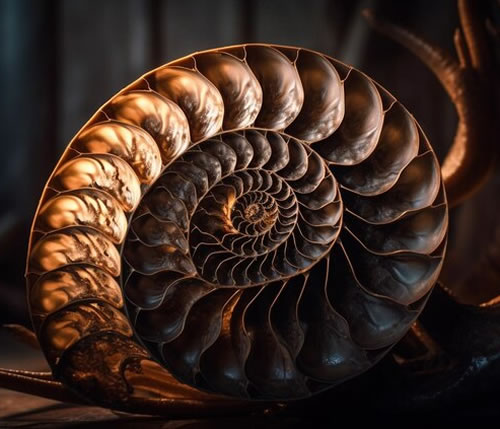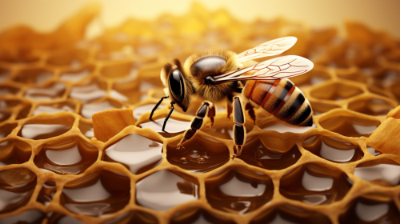While you’re out on that afternoon walk or buying that pineapple at the grocery store, mathematical concepts are accompanying you. We tend to think of mathematics as a subject in school or an afterschool program, but oftentimes we forget its importance in everyday life, especially in the physical world. To give you an example, we use multiplication to find the square footage of a home. But have you ever considered that there’s a link between math and a shell on the beach?
Mathematical concepts like the Fibonacci Sequence, fractals, hexagons, concentric circles, and more are not exclusive to the classroom. These topics can be found in nature, too. In fact, the more you learn about these phenomena, the more often you’ll see them crop up in day-to-day life, far beyond the reaches of any math lesson.
Fibonacci Sequence
Leonardo Fibonacci, a medieval Italian mathematician, discovered what is known as Fibonacci’s Sequence in the early 13th century. This concept essentially says that a group of numbers creates a spiral. Starting with 1, 1, each following number is added to the sequence by adding the previous two numbers together.
1, 1, 2, 3, 5, 8, 13, 21, 34,…
If you take any two successive Fibonacci numbers, you will see that their ratio is very close to the Golden Ratio (approximately 1.618034). This sequence and ratio creates a visual spiral that can be found in nature.

Certain shells, like the nautilus shell, pineapples, pinecones, and even hurricanes follow the Fibonacci Sequence and thus the Golden Ratio. The spirals in these beautiful aspects of nature are almost identical to the Golden Ratio.
Fractals
The word “fractal” was coined by mathematician Benoit Mandelbrot in 1975. A fractal is defined as “a rough or fragmented geometric shape that can be split into parts, each of which is (at least approximately) a reduced-size copy of the whole.”

This concept can be found quite frequently in our natural world; in the forest, flowers, plants, snowflakes, water, river deltas, and even the human body.
Next time you’re out for a walk, whether it be in the winter or spring, take a look at what’s around you. Do you see any fractals? Studies have shown that fractals in nature bring on a certain psychological reaction that can reduce stress by as much as 60%. The patterns have been shown to produce feel-good brain waves in the frontal lobe. Fractals are not only a cool math concept in nature, but they can destress you, too.
Hexagons
A hexagon is a geometric shape with 6 equal sides. The first example you may think of for this shape might be a stop sign. While a stop sign is intentionally made in this 6-sided shape, there are other things that occur naturally in a hexagonal shape. Turtle shells, honeycombs, bubble rafts, the composition of an insect’s eyes, and the water molecules of snowflakes all contain hexagons.

The honeycomb of a honeybee consists of scores of hexagon-shaped cells and for a long time scientists were unsure of the reason why this shape occurred in a natural phenomenon.
This is where the concept of a bubble raft can help explain. When there are a certain amount of bubbles, they naturally change from spherical to hexagon-shaped as they are a more efficient way to fill space. Similarly, the cells that bees make have a circular shape at first while the wax is still soft. The theory is that as the number of cells increases, the surface tension around them rises, and the circles gradually transform into hexagons, hardening into the familiar hexagonal honeycomb pattern that we recognize.
Concentric Circles
Concentric circles are two or more circles that share a common center point, but have different radii. In essence, these are all different sized circles, all inside one another. Concentric circles are very common in nature. From the inside of tree trunks, to dart boards, onions, and pebbles dropped into water; when you look carefully, you will notice this natural marvel.

When chopping down a tree, you can see the inside of the trunk where the rings take the shape of concentric circles. You can see the same when chopping into an onion or dropping a pebble into the water.
There are even theories and equations that can explain these phenomena, demonstrating the scientific basis behind this seemingly natural beauty.
At Online Math Center
Mathematics is certainly a subject to study in school, but still holds importance in developing skills and understanding in life. Many natural phenomena can teach us about science, life, and mathematics. As we can see in these examples, geometry is evident in the natural world. Shapes are all around us. They are created naturally and even can go as far as reducing our stress levels.
Contact us at OMC today to ensure your child gains a great understanding of the most important mathematical concepts like geometry, to further understand where to recognize it in the world. Students can strengthen their skills in foundational topics at OMC through our classes and tutoring. With two difficulty levels per grade, OMC works to get every student as advanced as possible; in mathematics and beyond.